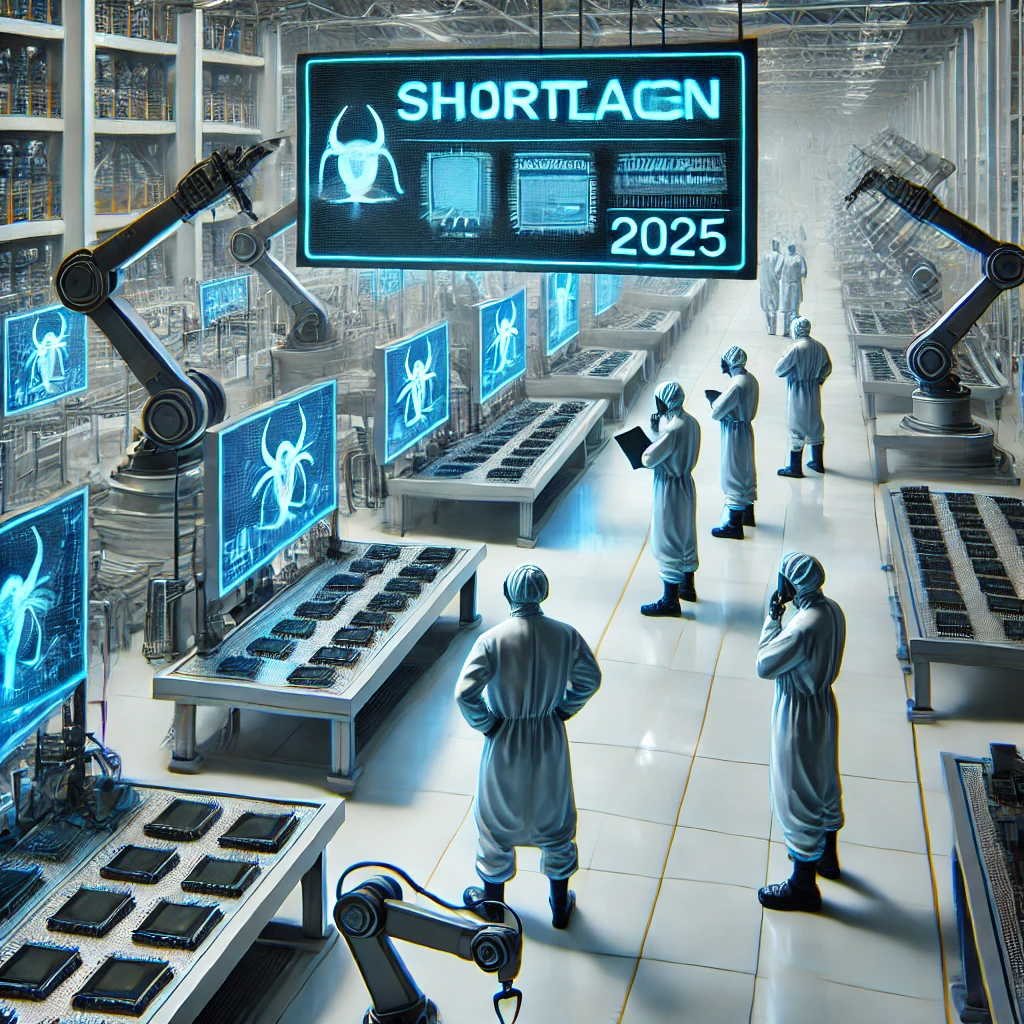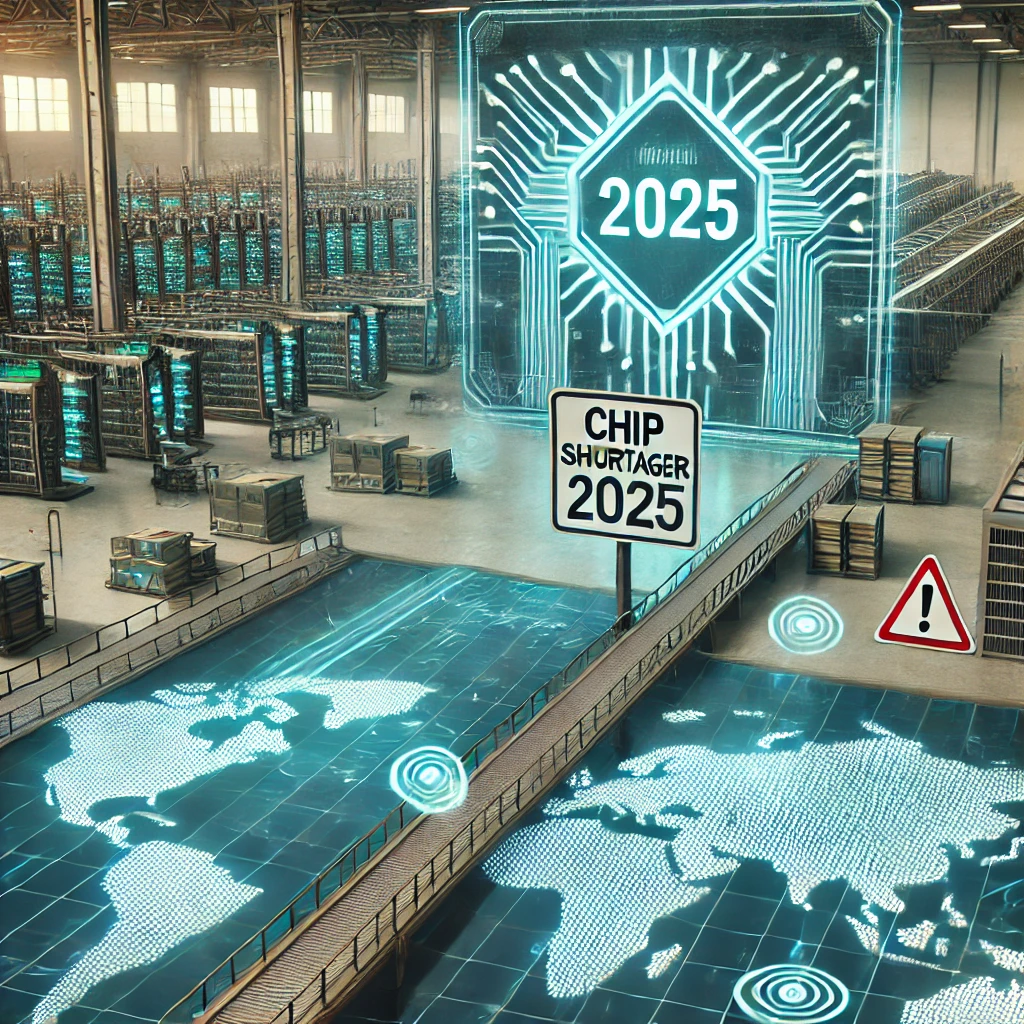Chip Shortage 2025: How Will It Impact the Tech Industry?
Introduction
As we move closer to 2025, the global semiconductor industry faces a looming crisis—the chip shortage. This ongoing supply chain disruption has already affected industries ranging from consumer electronics to automotive manufacturing. But what does 2025 hold for the chip market? Will the shortage worsen, stabilize, or give way to new solutions? This in-depth article explores the reasons behind the shortage, its impact on the tech industry, and potential solutions to mitigate its effects.
What Is Causing the Chip Shortage in 2025?
Several key factors contribute to the persistent chip shortage, making it a significant concern for tech companies worldwide:
1. Increased Demand for Semiconductors
- The rapid adoption of 5G technology, AI, IoT, and electric vehicles (EVs) has escalated the demand for chips.
- More devices and smart appliances rely on semiconductor components.
2. Geopolitical Tensions and Trade Wars
- Ongoing tensions between China and the US have led to export restrictions and supply chain bottlenecks.
- Taiwan, home to TSMC (Taiwan Semiconductor Manufacturing Company), remains at the center of the global chip supply but faces geopolitical risks.
3. Manufacturing Constraints & Production Delays
- Semiconductor fabrication plants (fabs) require billions of dollars and several years to build.
- Existing foundries are struggling to meet demand due to raw material shortages and production delays.
4. Raw Material Shortages
- The limited availability of rare earth metals, silicon, and neon gas (critical for chip manufacturing) has worsened the supply issue.
5. Supply Chain Disruptions Post-Pandemic
- The COVID-19 pandemic disrupted supply chains, and recovery remains slow.
- Shipping delays, factory closures, and labor shortages have prolonged the crisis.

Impact on the Tech Industry
The chip shortage has widespread effects across different sectors, affecting innovation, production, and pricing. Here’s how the industry will feel the impact in 2025:
1. Consumer Electronics
- Higher Prices: Smartphones, laptops, gaming consoles, and TVs will see price hikes due to limited chip supply.
- Production Delays: Tech giants like Apple, Samsung, and Sony may struggle to meet consumer demand for their latest products.
2. Automotive Industry
- EV and Smart Car Delays: The shortage will slow the production of electric vehicles (EVs) and autonomous cars, affecting brands like Tesla, Ford, and GM.
- Increased Car Prices: Due to limited supply, the prices of new cars are expected to rise further.
3. Cloud Computing & AI Development
- Data Center Growth Slows: Companies like Google, Amazon, and Microsoft may struggle to expand cloud computing infrastructure.
- AI Innovations Stagnate: AI-based industries requiring high-performance chips, such as robotics and machine learning, could face slowdowns.
4. Gaming Industry
- Graphics Cards & Consoles Remain Expensive: NVIDIA and AMD GPUs, as well as PlayStation and Xbox consoles, may continue experiencing stock shortages and inflated prices.
5. Cryptocurrency Mining
- Increased GPU Costs: The cryptocurrency mining industry will continue competing for high-end GPUs, driving up costs.
- New Mining Regulations: Governments may impose restrictions on crypto mining to manage chip allocation.
Solutions and Industry Response
To counter the semiconductor crisis, governments and tech companies are taking strategic measures:
1. Increased Investment in Chip Manufacturing
- The US CHIPS Act: The U.S. government has pledged billions to boost domestic chip production.
- Intel, TSMC, and Samsung Expansion: Major chipmakers are investing in new fabs to reduce dependency on limited suppliers.
2. Diversification of Supply Chain
- Companies are looking beyond Taiwan and China for chip manufacturing, with India, South Korea, and Europe emerging as new hubs.
- Businesses are shifting towards regional supply chains to mitigate risks.
3. Advancements in Semiconductor Technology
- Smaller & More Efficient Chips: Companies like IBM and Qualcomm are developing 3nm and 2nm chips to maximize output from limited silicon resources.
- Alternative Materials: Scientists are researching materials beyond silicon, such as graphene and gallium nitride, to create next-gen semiconductors.
4. Government Intervention & Policies
- Countries are increasing subsidies and incentives for chipmakers to boost domestic production.
- Governments are also promoting public-private partnerships to accelerate innovation.

Future Outlook: Will the Shortage End?
The semiconductor crisis is expected to gradually improve after 2025, but full recovery will take time. Here’s what the future looks like:
✅ 2025-2026: Partial stabilization as new fabs start production. Prices remain high but supply improves. ✅ 2027-2028: Widespread adoption of alternative chip technologies. Greater balance between supply and demand. ✅ Beyond 2030: Fully diversified semiconductor supply chain with advanced AI-driven chip design.
However, geopolitical tensions, raw material availability, and emerging technology demands will continue to influence market dynamics.
Conclusion
The chip shortage of 2025 is a significant challenge for the tech industry, affecting everything from smartphones to AI advancements. While the crisis is far from over, strategic investments, supply chain diversification, and technological innovations offer hope for a more stable semiconductor market in the coming years.
Key Takeaways:
📌 The chip shortage is driven by high demand, supply chain disruptions, and geopolitical factors.
📌 Industries like consumer electronics, automotive, AI, gaming, and cryptocurrency will be heavily impacted.
📌 Companies and governments are investing in new fabs, alternative materials, and supply chain diversification to ease the crisis.
📌 Recovery is expected after 2025, but full stability may take several years.
As we move forward, keeping an eye on global policies, new technological advancements, and industry shifts will be crucial in understanding how the semiconductor landscape evolves.
